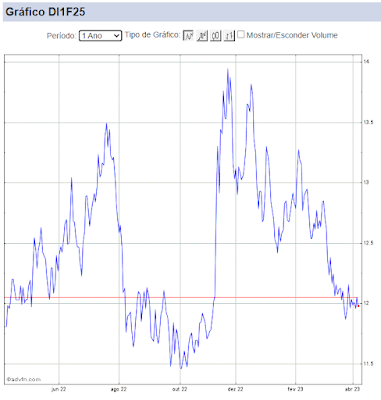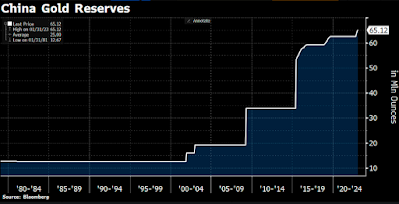Cenário Construtivo.
Hoje é dia de feriado nos EUA – o mais importante do ano – o que deve deixar a liquidez dos mercados locais bastante prejudicada. O destaque da agenda ficará por conta do IPCA-15 no Brasil.
Na tarde de ontem, as Minutas do FOMC praticamente confirmaram que uma nova alta de 25bps nas taxas de juros dos EUA irão ocorrer em dezembro. Contudo, o cenário para 2018 ainda se mostra incerto, o que acabou tornando o tom das Minutas mais dovish do que as expectativas. Segundo o DB:
Turning to the FOMC minutes last night. They seems to confirm the strong likehood of a December rate hike as “many participants thought another increase (in rates)….was likely to be warranted in the near term, if incoming data left the medium term outlook broadly unchanged”. However, the outlook for 2018 seems a bit dovish,as “a few participants cautioned that further increases in (rates)…while inflation remained persistently below 2% could unduly depress inflation expectations” and a couple of members even suggested the Fed should revise the 2% target to a “gradually rising path approach”. Further, some noted that when considering the timing of more rate hikes, “they would be evaluating incoming information to assess the likelihood that the recent low inflation were transitory and that inflation was on a trajectory consistent with achieving the 2% objective over the medium term.” Elsewhere, some members expressed concerns “about a potential build-up of financial imbalances” and that a sharp reversal in asset prices could hurt the economy.
Na minha visão, desenvolveu-se um ambiente relativamente construtivo, salvo mudanças radicais de cenário e/ou realizações pontuais de lucro, para os ativos de risco neste final de ano. Em especial, os ativos dos países emergentes, entre eles o Brasil, parecem bem posicionados para um bom desempenho nas semanais finais de 2017.
Continuo a ver um pano de fundo de crescimento global sólido, uma inflação que sobe de maneira apenas gradual no mundo desenvolvido e um processo de normalização monetária extremamente gradual e bem comunicada nas principais economias do mundo. Os países emergentes, no geral, apresentam fundamentos mais sólidos hoje do que em outros momentos do passado recentes (como, por exemplo, no “Taper Tantrum de 2013). A China apresenta desaceleração, mas dentro do que já era esperado. Além disso, o processo de reformas da economia chinesa foi retomado e a desalavancagem da economia está ocorrendo de maneira suave e bem administrada. Existem alguns riscos locais e idiossincráticos, como no México (NAFTA), Turquia, Brexit, Política na Alemanha e etc, mas nenhum deles parece forte o bastante para gerar contágio ou mudança definitiva de cenário econômico global. O risco continua a ser um processo de alta mais rápido e acentuada da inflação na mundo desenvolvido e/ou uma desaceleração mais acentuada na China.
No Brasil, as articulações políticas continuam a todo vapor para a aprovação da Reforma da Previdência. Como era esperado, Temer e Cia negociam cargos, recursos e alterações no texto original para que o projeto seja endereçado no Congresso. A mídia, como sempre, critica a postura de diálogo e negociações, adotando um tom alarmista com relação as alterações no texto base e a liberação de recursos.
Acredito que grande parte da recuperação dos ativos locais nos últimos dias tenha sido impulsionada pela recuperação dos ativos de risco globais, em especial, dos demais emergentes. Acredito que pouco da Reforma da Previdência esteja precificado pelo mercado. Assim, qualquer aprovação de fato será vista mais com um “risco positivo” para os ativos locais.devemos ter volatilidade no curto-prazo e bastante reação a “headlines” da mídia, mas grosso modo os ativos do Brasil devem seguir o humor global em relação aos demais países emergentes (já comentado acima). A aprovação de uma Reforma da Previdência possível seria capaz de trazer alguma “blindagem” aos ativos locais a médio-prazo, além de gerar algum descolamento positivos dos ativos do Brasil no curto-prazo e uma over-performance em relação aos seus pares.
Encerro aqui com um comentário do Morgan Stanley, que tem resumido muito bem o cenário de curto-prazo e cuja visão se assemelha em muito com o que tenho descrito neste fórum:
USD weakness remains our dominant theme. So far, we have played this theme via bullish EM and EUR strategies. We see increasing chances of JPY taking off, following in the footsteps of EUR. Markets do talk and the divergence of the inverse relationship between JPY and Japan's local asset prices including its equity market suggests that the structure within the flow of funds has changed, now working in favour of JPY. This meets a market which is not prepared for these new developments. CFTC data showed that JPY positioning is its shortest since 2013, while volatility is low. Should volatility rise, it could lead to a positioning squeeze, leading to JPY strength.
Bullish risk appetite no longer leads JPY crosses including USDJPY higher. Reasons for this development are multiple. First, the dovish Fed has put the risk parity trade back on the agenda, seeing bonds and equity prices rising likewise. Second, the Fed seems to be aiming for stronger nominal growth in the US economy, trying to boost capex and wages. Globally imposed reflationary strategies will lower the hurdle for Japan to overcome deflation, which may allow the BoJ to adjust its policies earlier. In anticipation of this possible outcome, investors will not be able to hold on to JPY short positions. Markets trade like ‘Abenomics’ is turning successful.
A dovish Fed: Risk continues following its seasonal pattern as investors get positioned for next year. EM real yield stands out and, with rallying equity markets paving the way for local currency debt flows to move back into positive territory, chances of EM currencies rallying meaningfully are high. Our USD framework rests on two pillars, namely US real yields staying low and global funding demand moving up. Fed Chair Yellen seems to be in no rush to give up on her gradualism, fearing a premature tightening pushing underdeveloped inflation expectations lower again, a view which was echoed by the Fed minutes overnight. The Fed hoping to see rising capital goods expenditures pushing productivity growth up, which in turn may open scope for wage increases, has experienced a mild disappointment with yesterday’s October capital goods orders report. Non-defence capital goods orders excluding aircraft – which is seen as a proxy for business investment in big-ticket items – fell 0.5%, compared to expectations for a 0.5% increase and the 2.1% gain recorded in September.
Oil prices broke higher as OPEC insisted that oil markets have found a new balance. However, the Baker Hughes rig count rising (oil: 747 vs. prev. 738; gas: 176 vs. prev 177; total: 923 vs. prev 915) justifies the current aggressive backwardation in the oil forwards curve, suggesting us not getting too bullish on oil currencies. Currently, the US produces 9.7mn bpd and is expected to increase production by 1mn bpd in 2018. Particularly, the current NOK rally should soon run out of steam. Norway, similar to Sweden, sees its housing market topping out, which suggests the weakening wealth effect reducing household consumption and local banks increasing their loan provisions and turning more cautious on lending.


Comentários
Postar um comentário